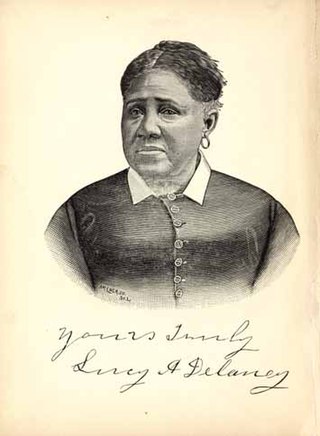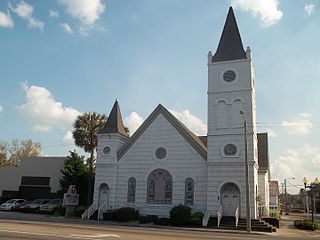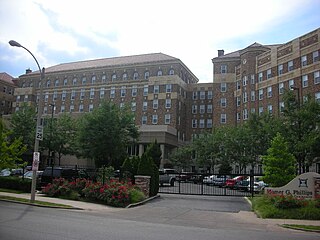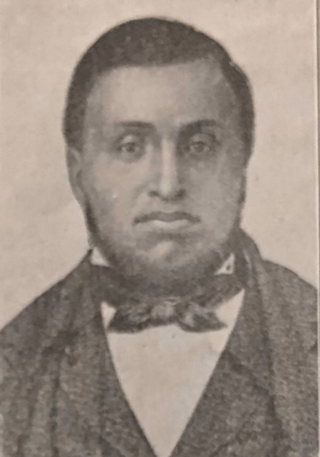
The history of Missouri begins with settlement of the region by indigenous people during the Paleo-Indian period beginning in about 12,000 BC. Subsequent periods of native life emerged until the 17th century. New France set up small settlements, and in 1803, Napoleonic France sold the area to the U.S. as part of the Louisiana Purchase. Statehood for Missouri came following the Missouri Compromise in 1820 that allowed slavery. Settlement was rapid after 1820, aided by a network of rivers navigable by steamboats, centered in the City of St. Louis. It attracted European immigrants, especially Germans; the business community had a large Yankee element as well. The Civil War saw numerous small battles and control by the Union. After the war, its economy diversified, and railroads centered in Kansas City, opened up new farmlands in the west.

Edward Bates was an American lawyer, politician and judge. He represented Missouri in the US House of Representatives and served as the U.S. Attorney General under President Abraham Lincoln. A member of the influential Bates family, he was the first US Cabinet appointee from a state west of the Mississippi River.

Bellefontaine Cemetery is a nonprofit, non-denominational cemetery and arboretum in St. Louis, Missouri. Founded in 1849 as a rural cemetery, Bellefontaine is home to a number of architecturally significant monuments and mausoleums such as the Louis Sullivan-designed Wainwright Tomb, which is listed on the National Register of Historic Places.

Lincoln University is a public, historically black, land-grant university in Jefferson City, Missouri. Founded in 1866 by African-American veterans of the American Civil War, it is a member-school of the Thurgood Marshall College Fund. This was the first black university in the state. In the fall 2022, the university enrolled 1,833 students.

John Mason Peck (1789–1858) was an American Baptist missionary to the western frontier of the United States, especially in Missouri and Illinois. A prominent anti-slavery advocate of his day, Peck also founded many educational institutions and wrote prolifically.

Lucy Delaney was an African American seamstress, slave narrator, and community leader. She was born into slavery and was primarily held by the Major Taylor Berry and Judge Robert Wash families. As a teenager, she was the subject of a freedom lawsuit, because her mother lived in Illinois, a free state, longer than 90 days. According to Illinois state law, enslaved people that reside in Illinois for more than 90 days should be indentured and freed. The country's rule of partus sequitur ventrem asserts that if the mother was free at the child's birth, the child should be free. After Delaney's mother, Polly Berry, filed a lawsuit for herself, she filed a lawsuit on her daughter's behalf in 1842. Delaney was held in jail for 17 months while awaiting the trial.

Polly Berry was an African American woman notable for winning two freedom suits in St. Louis, one for herself, which she won in 1843, and one for her daughter Lucy, which she won in 1844. Having acquired the surnames of her slaveholders, she was also known as Polly Crockett and Polly Wash, the latter of which was the name used in her freedom suit.

The black church is the faith and body of Christian denominations and congregations in the United States that minister predominantly to, and are led by, African Americans, as well as these churches' collective traditions and members. The term "black church" may also refer to individual congregations, including in traditionally white-led denominations.

The Ville is a historic African-American neighborhood with many African-American businesses located in North St. Louis, Missouri, U.S.. This neighborhood is a forty-two-square-block bounded by St. Louis Avenue on the north, Martin Luther King Drive on the south, Sarah on the east and Taylor on the west. From 1911 to 1950, The Ville was the center of African American culture within the city of St. Louis.
The history of St. Louis began with the settlement of the area by Native American mound builders who lived as part of the Mississippian culture from the 9th century to the 15th century, followed by other migrating tribal groups. Starting in the late 17th century, French explorers arrived. Spain took over in 1763 and a trading company led by Pierre Laclede and Auguste Chouteau established the settlement of St. Louis in February 1764. It attracted French settlers leaving Illinois after their defeat in the Seven Years' War. The city grew in population due to its location as a trading post on the Mississippi River, as the western fur trade was lucrative. The city played a small role in the American Revolutionary War and became part of the U.S. through the Louisiana Purchase in 1803.
The American Baptist Home Mission Society is a Christian missionary society. Its main predecessor the Home Mission Society was established in New York City in 1832 to operate in the American frontier, with the stated mission "to preach the Gospel, establish churches and give support and ministry to the unchurched and destitute." In the 19th century, the Society was related to the Triennial Convention of Baptists. Today it is part of that Convention's successor, the American Baptist Churches, USA, and is the successor by merger of several 19th century Baptist organizations related to missions and education, including publications (1824), women (1877), and education (1888)

Anti-literacy laws in many slave states before and during the American Civil War affected slaves, freedmen, and in some cases all people of color. Some laws arose from concerns that literate slaves could forge the documents required to escape to a free state. According to William M. Banks, "Many slaves who learned to write did indeed achieve freedom by this method. The wanted posters for runaways often mentioned whether the escapee could write." Anti-literacy laws also arose from fears of slave insurrection, particularly around the time of abolitionist David Walker's 1829 publication of Appeal to the Colored Citizens of the World, which openly advocated rebellion, and Nat Turner's slave rebellion of 1831.

The history of St. Louis, Missouri from 1804 to 1865 included the creation of St. Louis as the territorial capital of the Louisiana Territory, a brief period of growth until the Panic of 1819 and subsequent depression, rapid diversification of industry after the introduction of the steamboat and the return of prosperity, and rising tensions about the issues of immigration and slavery. St. Louis also played a role in the American Civil War.

John Berry Meachum (1789–1854) was an American pastor, businessman, educator and founder of the First African Baptist Church in St. Louis, the oldest black church west of the Mississippi River. At a time when it was illegal in the city to teach people of color to read and write, Meachum operated a school in the church's basement. Meachum also circumvented a Missouri state law banning education for black people by creating the Floating Freedom School on a steamboat on the Mississippi River.

James Milton Turner was a Reconstruction Era political leader, activist, educator, and diplomat. Appointed consul general to Liberia in 1871, he was the first African-American to serve in the U.S. diplomatic corps.

Harriet Robinson Scott was an African American woman who fought for her freedom alongside her husband, Dred Scott, for eleven years. Their legal battle culminated in the infamous United States Supreme Court decision Dred Scott v. Sandford in 1857. On April 6, 1846, attorney Francis B. Murdoch had initiated Harriet v. Irene Emerson in the Circuit Court of St. Louis County, making the Scotts the first and only married couple to file separate freedom suits in tandem.

John R. Anderson, also known as J. Richard Anderson, was an American minister from St. Louis, Missouri, who fought against slavery and for education for African Americans. As a boy, he was an indentured servant, who attained his freedom at the age of 12. Anderson worked as a typesetter for the Missouri Republican and for Elijah Parish Lovejoy's anti-slavery newspaper, the Alton Observer. He founded the Antioch Baptist Church in Brooklyn, Illinois and then returned to St. Louis where he was a co-founder and the second pastor of the Central Baptist Church. He served the church until his death in 1863.
First Baptist Church City of St. Louis is a Baptist church located in Midtown St. Louis at 3100 Bell Avenue in St. Louis. It is affiliated with the National Baptist Convention, USA.
Paul and Susannah Mitchem were a couple from Virginia who owned dozens of slaves; late in their life they decided to bring their slaves to Harrison County, Indiana and free them. They also used the Meachum surname. The Mitchems emancipated over 100 enslaved people in Indiana, most of whom settled around Corydon, Indiana. Farms, businesses, churches, and schools were established by and for the African American community, often called the Mitchem Settlement.
















